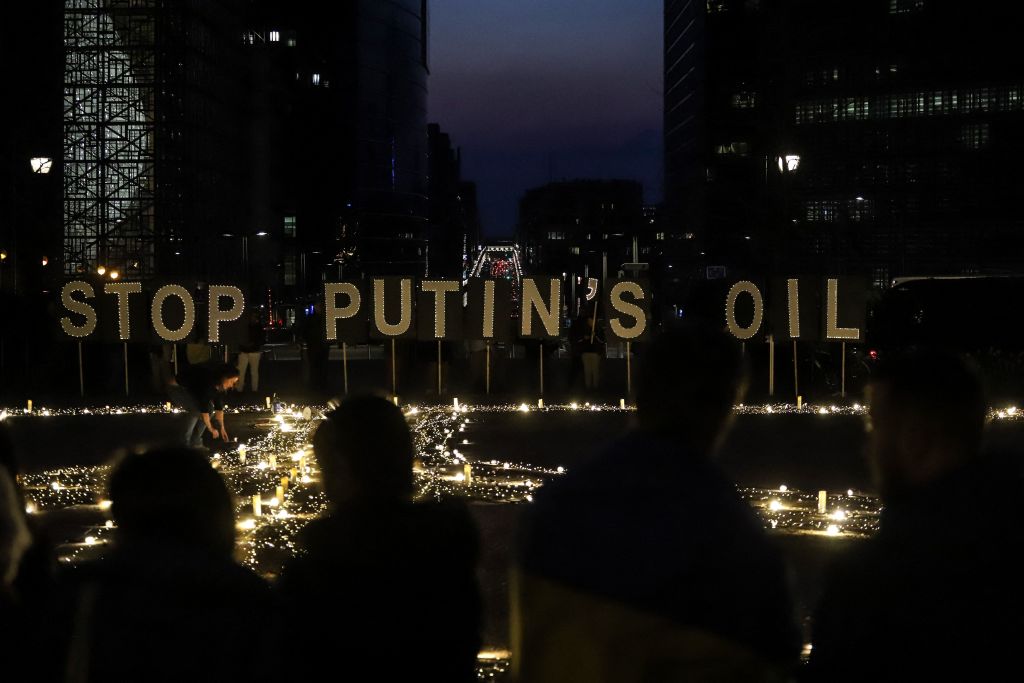The EU’s import embargo of Russian oil – which comes into force today – plus a price cap on non-EU seaborne exports is intended to hit Russia without damaging the West. It sounds too good to be true, and it probably is.
First, there’s the price cap level itself. Originally, the EU had wanted to push for a more comprehensive ban on maritime shipping insurers providing any coverage to vessels carrying Russian oil. But this frightened the US, so what we’re left with is the cap. The final figure, which the EU agreed on at the end of last week, is $60 (£49) per barrel.
Russian crude oil sales have shifted away from Europe and towards Asia
But this is not much less than the $65-70 (£52-57) per barrel that Urals crude, the benchmark for Russian oil, is currently trading at (though working out how much Russian oil actually changes hands for is not that straightforward). Crucially, the cap is also higher than Russian oil production costs, at around $40 (£32) per barrel (again, this is an average, and costs can be much lower, or higher).
Then there’s sanctions-busting. Russia has added over 100 oil tankers to its own fleet, according to Rystad, an energy consultancy. The aim is clearly to provide Moscow with its own parallel shipping and insurance. This is what Iran and Venezuela have done when they have come under similar sanctions. Altogether, Russia, Iran and Venezuela have a combined fleet of about 500 tankers with a cargo capacity of more than 34,000 tons deadweight.
You can also use any number of tricks to try and hide the origin of crude oil, like ship-to-ship transfers, or blending sanctioned oil at an intermediate point. Seasoned oil-watchers will be familiar with so-called Malaysian blend crude oil, an attempt to effectively pass off sanctioned Iranian and Venezuelan oil as coming from the southeast Asian nation.
Finally, Russia could respond too, with counter-sanctions of their own. The Russian government has already said they will not sell to countries that implement the cap, and that they are formulating a response. Russian crude oil sales have shifted away from Europe and towards Asia. In November, 40 per cent of seaborne exports went to India, which before the war was a minor customer for Russian crude, according to Refinitiv data. Flows to Europe are now below 500,000 barrels per day. In November 2021, Germany alone imported almost 700,000 barrels per day of Russian crude oil.
But this is not to say that the sanctions will have no impact at all. One area where we do expect to see an effect is refined products. Russia has historically been a major exporter of diesel and jet fuel, to name a couple of examples, to the EU. Russia exported 1.2m barrels per day of refined fuels to the EU in 2021, according to data from the International Energy Agency – making up nearly a quarter of the bloc’s total consumption of refined products that year.
Another problem we have seen popping up in the last year is periods of tightness in global diesel markets, prompted by rising demand and refinery bottlenecks. These problems could re-emerge. Today’s EU import embargo is on crude oil, but another one on refined products, including diesel, will follow in February. Russia may also decide to do something about diesel exports in the interim.
What kind of effect, if any, the sanctions have won’t be clear for some time. There will be an adjustment period for oil buyers and shippers, as they figure out how to respond to the measures, and assess what they will mean. How Opec+, which includes Russia, will respond is another question. At their latest meeting, they decided against further cuts to oil output, following the 2m barrel-per-day cut they agreed on in October, but have said they will remain poised to meet at short notice.
A version of this article first appeared in the Eurointelligence morning news briefing. Sign up here






Comments